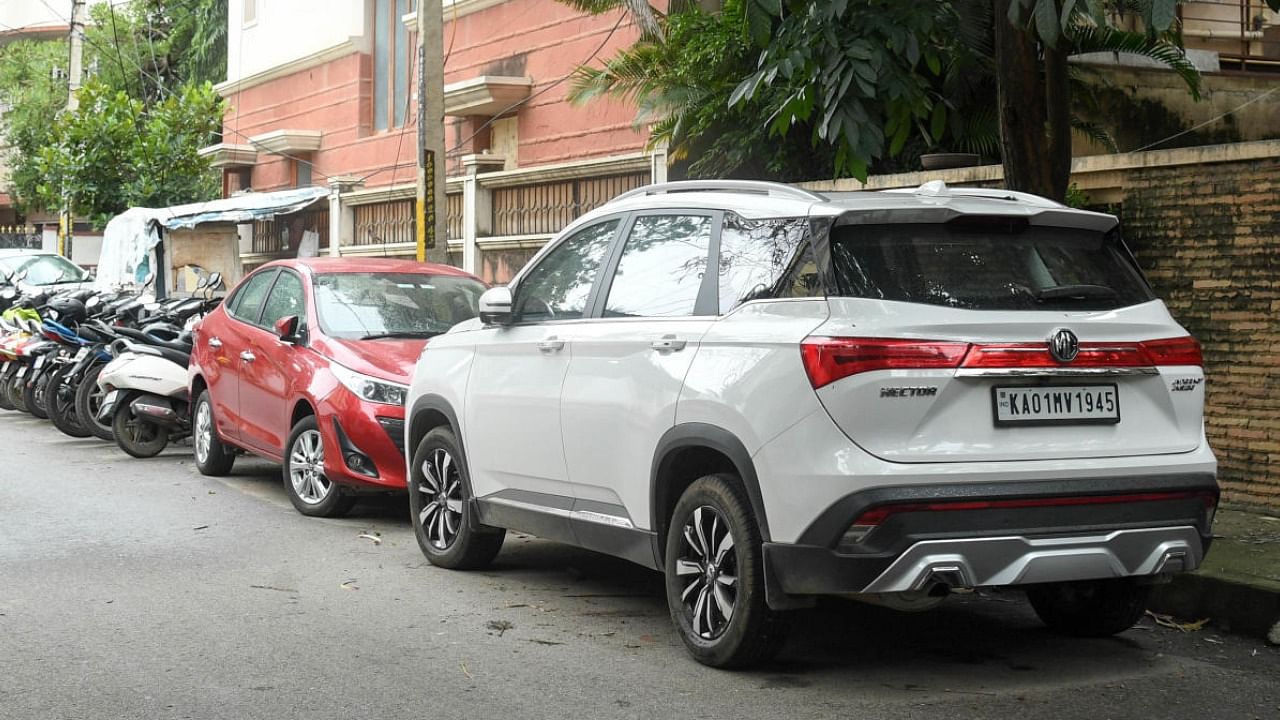

All of us have experienced how during the Covid-19 related lockdowns, when Bengalureans have been mostly indoors, the traffic had reduced drastically resulting in marked reduction in traffic-related tailpipe emissions.
With the extreme transport-related externalities that Bengaluru had been facing during the pre-Covid period and the experiences during the pandemic, there is now a renewed focus on sustainable mobility in Indian cities. One of the key strategies to achieve the same is to look at parking as a demand management measure rather than as a supply-side intervention. In the latter approach, we have clearly seen that the more you provide parking space for personal vehicles, particularly in the busy areas of Bengaluru, the more we will encourage usage of personal mobility vehicles. This will further lead to more traffic congestion.
Right direction
To this effect, the Parking Policy 2.0 that was prepared and released by the Directorate of Urban Land Transport (DULT) is a welcome step and one in the right direction. It is positioned with an aim to discourage personal vehicle usage and increase the mode share of public transport, walking, and cycling.
The four objectives defined to achieve this goal with clear mapping of policy directives to each of these, gives an indication of well thought policy directions towards managing parking in Bengaluru.
Low annual permit fees
However, there is scope for improving some elements of this parking policy, in particular with respect to charges determined for annual residential parking permits. The fee for these annual parking permits ranges from Rs 1,000 to Rs 5,000 for different category of personal cars.
If converted into daily or hourly equivalent cost, this will prove to be highly ineffective in curbing free use of residential street space for parking of personal vehicles by residents of those localities. This drawback will reduce the effectiveness of the parking policy in regulating parking in residential areas.
Likewise, there is a good scope to relook at the parking fees specified for park-and-ride, which should have been more incentivised to encourage more and more usage of public transport. In my opinion, a more detailed study and sensitivity analysis will be useful to reform these parking charges in a way that induces good travel demand management strategies.
Reliable parking tech
Further, it is a good idea to make more and more use of technology for parking management. However, we have to ensure that the system adopted should be easy to use and reliable. It has been observed that presently in locations such as M G Road with an App-based parking payment system in place, the App often does not work, shows error or functions very slowly.
Overall, while the direction of the parking policy is good, much needs to be seen how effectively it is introduced, enforced, and monitored going further into the months after the implementation.
Missing indicators
How and to what extent this parking policy helps in improving the mode share of public transport, which is the main stated goal of the policy, will also need to be seen. To that extent, what is missing in the policy is clearly defined Key Performance Indicators (KPIs) to monitor and evaluate the performance of the parking policy and the achievement of the stated goals and objectives in the policy.
Also, considering that Work from Home (WFH) has become a norm during the pandemic for many establishments, in particular the Information Technology industry, the norms for parking requirement and accordingly the parking space requirements in different areas may require some relook. This is especially so since Business As Usual (BAU) is unlikely to come back any time soon.
Further, with the surge observed in private vehicle ownership during the pandemic, it may require sharpening of dis-incentivisation actions (fee levels, space provisions etc.) in the policy. This can act as a good deterrent to prevent the surge in usage of private vehicles.
(Ashish Verma is an Associate Professor and Convenor at the Indian Institute of Science (IISc) Sustainable Transportation Lab, attached to the Department of Civil Engineering).